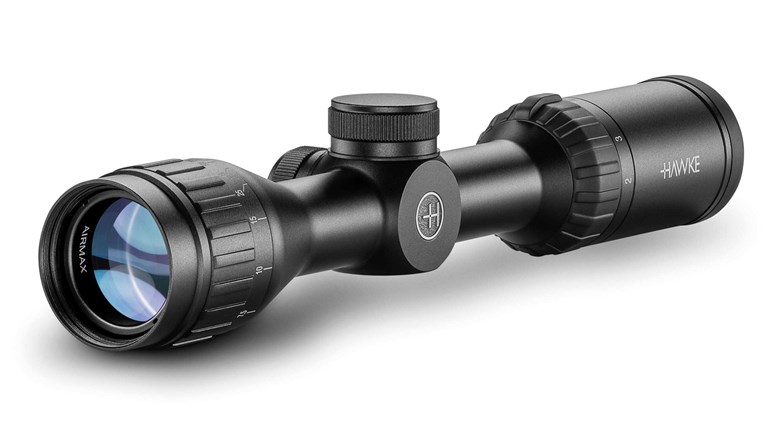

While the VCOG is 10 inches long, the integral mount requires less rail space, leaving room for backup sights.

A single AA battery powers the reticle, which is visible even when illumination is turned off.
In addition to multiple reticles, the VCOG has two different mounting options. A traditional double thumb screw mount is available, as is a quick-release mount with a lever for rapid attachment or detachment. Getting the VCOG on—or off—your chosen rifle or carbine is simple no matter which mount is included, and there’s no need to search for the right rings, or worry about lapping.

Magnification changes are made rapidly and easily using the large dial fin atop the power selector.
After successful installation on a 16-inch-barreled, AR-15-style carbine, a simple “box drill” confirmed repeatability of adjustments. Three shots on center, then up, right, down, and left brought the final three-round group nearly on top of the original. Adjusting the turrets requires little effort and all clicks are audible as well as tactile—you can feel each half-inch (at 100 meters) change as it is made.

Adjustments to windage and elevation are made in half-inch clicks (for targets at 100 meters) and are both audible and tactile.
The segmented circle reticle works very well for targets of moderate size, like a standard Q target or IDPA “A” zone. At the highest setting it’s immediately visible even in direct sunlight (well, sunlight directly overhead; we don’t recommend looking at the sun through any scope). For indoor or lower light levels the mid-ranges work fine for the brightness. Here’s another handy, thoughtful engineering modification the VCOG brings: on the brightness adjustment, there are “off” stops between each level of power—there’s no more running the scope all the way back to “off” from the middle of the dial.
 At an MSRP of $2,800, the VCOG isn’t exactly budget-friendly. It’s a Trijicon scope, though; a high-end, high-value optic. The VCOG has only been available for a short while, but shares the same ruggedness and heritage as the ACOG. If you’re intending to use your rifle/optic in a variety of endeavors, like 3-gun competition, and want something that can take any punishment you could possibly dream up, the VCOG should prove its worth through years of trouble-free use.
At an MSRP of $2,800, the VCOG isn’t exactly budget-friendly. It’s a Trijicon scope, though; a high-end, high-value optic. The VCOG has only been available for a short while, but shares the same ruggedness and heritage as the ACOG. If you’re intending to use your rifle/optic in a variety of endeavors, like 3-gun competition, and want something that can take any punishment you could possibly dream up, the VCOG should prove its worth through years of trouble-free use.



































